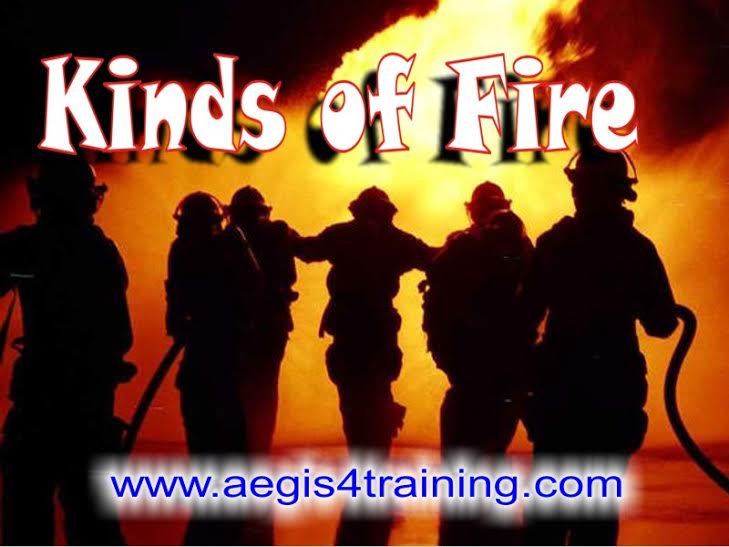Kinds of Fires

Class A
Class A Fires compose of common combustibles such as wood, paper, trash or something else
that leaves an ash. Water works best to extinguish a Class A fire.
Class B
Class B Fires are fueled by combustible liquids, which include oil, gasoline, and other similar
materials. Smothering effects which reduce the oxygen supply work best to extinguish Class B
fires.
Class C
This sort of fire may be caused by short-circuiting machinery or overloaded electrical cables.
These fires can be a severe hazard to firefighters using water or other conductive agents, as
electricity may be conducted from the fire, through water, to the firefighters body, and then
earth. Electrical shocks have caused many firefighter deaths.
Electrical fire may be fought in the same way as an ordinary combustible fire, but water, foam,
and other conductive agents are not to be used. While the fire is or possibly could be electrically
energized, it can be fought with any extinguishing agent rated for electrical fire. Carbon dioxide
CO 2 , NOVEC 1230, FM-200 and dry chemical powder extinguishers such as PKP and even
baking soda are especially suited to extinguishing this sort of fire. PKP should be a last resort
solution to extinguishing the fire due to its corrosive tendencies. Once electricity is shut off to
the equipment involved, it will generally become an ordinary combustible fire.
In Europe, "electrical fires" are no longer recognized as a separate class of fire as electricity itself
cannot burn. The items around the electrical sources may burn. By turning the electrical source
off, the fire can be fought by one of the other class of fire extinguishers
Class D
Class D Fires are combustible metal fires. Magnesium and Titanium are the most familiar types
of metal fires. Once a metal ignites do not use water in an attempt to extinguish it. Only use a
Dry Powder extinguishing agent. Dry powder agents work by smothering and heat absorption.
Class K
Class K fires involve unsaturated cooking oils in well-insulated cooking appliances located in
commercial kitchens.
Fires that involve cooking oils or fats are designated Class K" under the American system, and
"Class F" under the European/Australasian systems. Though such fires are technically a subclass
of the flammable liquid/gas class, the special characteristics of these types of fires, namely the
higher flash point, are considered important enough to recognize separately. Watermist can be
used to extinguish such fires. Appropriate fire extinguishers may also have hoods over them that
help extinguish the fire. Sometimes fire blankets are used to stop a fire in a kitchen or on a stove.
Sound like a lot?
An simple way to keep in mind these types of Fires is (beat) Class A leaves an Ash, (beat) Class
B boils,(beat) Class C has current (beat), and Class D has Dense Material (beat), And don’t
forget the most overlooked, Class K for Kitchen.
